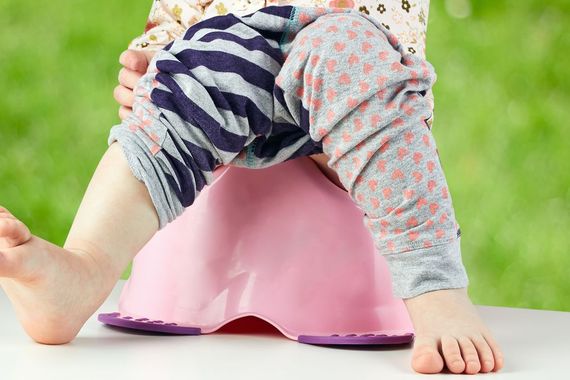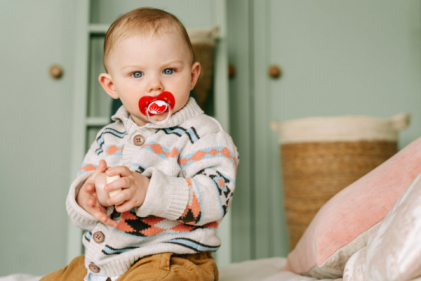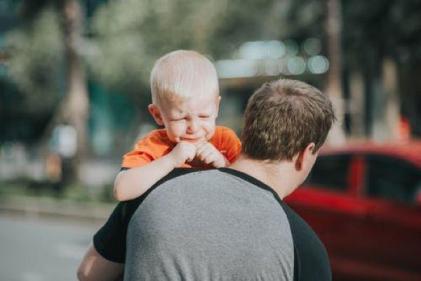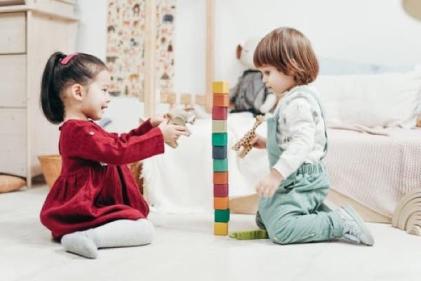 Potty training is a daunting concept for many parents – particularly if you’ve never done it before! However, there are a few simple ways to make it easier for you, and for your child.
Potty training is a daunting concept for many parents – particularly if you’ve never done it before! However, there are a few simple ways to make it easier for you, and for your child.
Is my child ready to potty train?
Trying to begin potty training before your child is ready is an exercise in futility. However, while most parents start trying to potty train their child from about 30 months, some children aren’t ready until they’re three, or even four years old!
There is no right age to begin the potty training process. Look for signs that your child is ready to start, like increased independence, and a dislike of wearing a dirty nappy, but also consider environmental and circumstantial factors, like a new baby, or moving house. When there’s instability in your child’s life, it’s unlikely to be the best time to start potty training.
It’s also important to choose a time when you and your partner are ready to start potty training. If you’re under pressure at work or at home, or you are coping with a new baby, it may be better to leave it for a while before you start.
What do I need to potty train my child?
Before you can begin potty training, you will need a potty, or a child sized toilet seat adapter. If you do choose a seat that fits on the grown up toilet, get a stool too, so your child’s feet can be flat on the ‘floor’ rather than dangling in the air. You also want to get the right kind of potty – look for a portable model that has a detachable urine guard, if any. This can make potty training boys a lot easier.
Which techniques should I use to teach my child?
- Schedule. Having a potty training schedule is a good idea. At first, this can consist of letting your child sit, fully clothed, on the potty at several times during the day. This will help to acclimatise your child to using the potty later on. Once they are ready, they can begin using the potty properly.
- Show, don’t tell. One of the best ways to get your child to understand the idea of using the potty (or toilet) is to let him or her see you go to the toilet. Show them how you take your pants and underwear off, wipe, and flush. You may find that your child develops an interest in sitting on the toilet now – let them, as it’s a good learning experience, even if it doesn’t work at first!
- Normalise it. Telling your child about potty training is another way to make the process easier. Using books and stories about using the toilet are another good idea. Try keeping these kinds of books in the bathroom, and let your child read about the steps as he or she attempts to use the potty.
- Remind them. It may seem like nagging, but young children can often ‘forget’ that they need to use the potty. Make a point of encouraging your child to use the potty, or reminding him or her gently by asking if he or she needs to go. You could also let your child play without a nappy, in the vicinity of the potty, and look out for signs that he or she needs to go, such as swaying or rocking, or grabbing him or herself.
- Offer encouragement. Make sure that you celebrate every ‘victory.’ If you praise your child every time he or she uses the potty successfully, he or she will be more likely to want to remember to use it next time.
For more tips and ideas, visit Potty training hacks or to find out what to avoid, try potty training methods that just don’t work.
How long will it take?
If you’re an optimistic type, check out this article on potty training your child in a few days.
In most cases, the length of time will vary from child to child, but it is important to accept that even if they take to their potty quickly, there will be accidents. Getting angry, or punishing your child is counterproductive, and will probably set back any progress your child has made. Simply take it in your stride, clean up the mess, and remind your child gently that next time, he or she needs to use the potty instead.
Potty training outside the house
When your child is potty training, it’s easier to use training pants than it is to use underwear, and have to deal with the inevitable accidents. Phase training pants in gradually, and keep using nappies at night, at least until your child has mastered bladder and bowel control during the day. This will be especially useful during trips outside the house when your little one is away from their potty.
If they have begun to graduate to the proper toilet, click through to How to handle public toilets.
How will I potty train my child at night?
Once your child is staying dry, and using the potty most of the time then it’s time to start night training. Continue using training pants at night, but encourage your child to use the potty during the night if he or she needs to. A mattress protector is a good idea as bedwetting is very likely in the early stages, and once your child is staying dry for five or more nights in a row, then it’s time to try real underwear. Keep bedtime liquids to a minimum, and hope for the best. Practice makes perfect!
Keep a level head
It can be frustrating, but getting angry or visibly irritated will only make the entire process more unpleasant and stressful for your little one. Don’t stress too much about wiping and washing hands at first – they can master these habits when they have the basics.
If you’re potty training a boy, read our guide on peeing while standing up.




